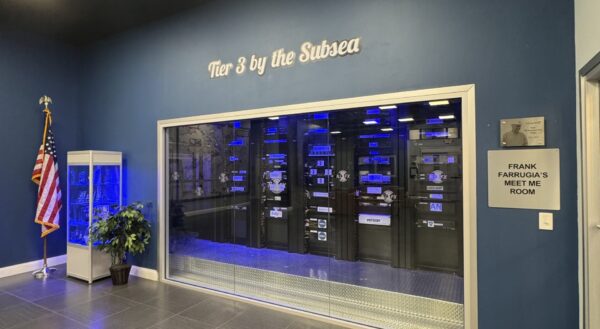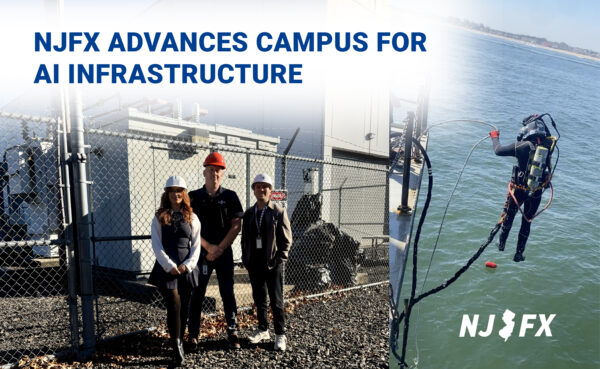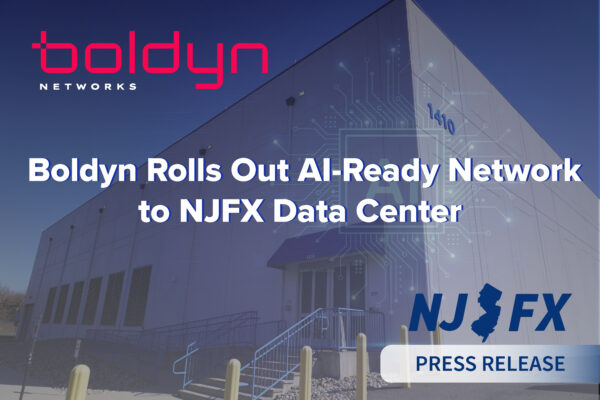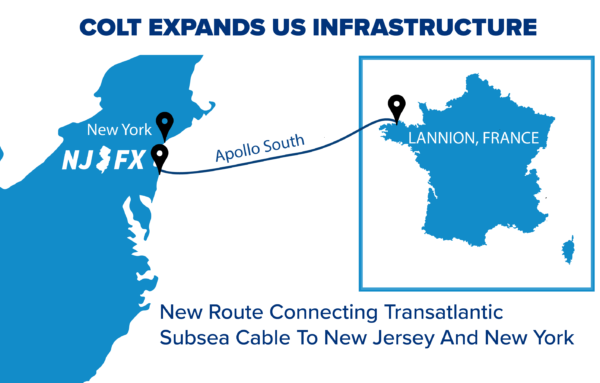
The AI-Ready Cable Landing Station is Coming
NJFX today announced the completion of a comprehensive Basis of Design for a new 10MW high-density AI data hall, delivering an expected 1.25 PUE and 8MW of usable IT load.
July 19, 2021

Always focused on expanding horizons and learning how to best serve our industry, NJFX is proud to become a new member of the International Telecommunications Union Development sector (ITU-D). As an advocate for the important role the telecommunications industry and private sector play in the work of information and communication technology (ICT), NJFX Founder and CEO Gil Santaliz was asked to speak at the organization’s Industry Advisory Group for Development Issues and the Private Sector Chief Regulatory Officers (IAGDI-CRO) meeting which took place virtually on June 22, 2021.
The IAGDI-CRO brings together policymakers, ICT Regulators, private sector entities, academia, and the international community, along with thought leaders from across the industry. The esteemed group met to discuss policy, regulatory and market approaches and incentives to foster investment and business opportunities for meaningful connectivity across the globe.
During this meeting, members of the IAGDI-CRO discussed the importance of having flexible regulation and explored ways that industry and regulators could work together to build a robust, reliable, and resilient digital ecosystem while emphasizing the importance of partnerships that extend to non-traditional stakeholders.
Collaboration is (Still) the Name of the Game
The ITU-D panel also focused on the group’s Connecting the Unconnected initiative, which aims to work with governments to bring internet access to 75% of the global population by 2025. The initiative also aims to achieve universal, affordable access by 2030. In order to make meaningful connectivity a reality, everyone needs access to higher quality broadband.
As Gil noted, collaboration between the telecom industry and local governments is key. He added that it’s important to look at how the private sector communicates as well as examine the infrastructure behind it. “The ITU-D initiative clearly relies on physical infrastructure. The infrastructure needs to have support and needs to have a fair marketplace to work within it, which the regulators in each country have to manage. The initiative also has to allow private dollars to be predictable in terms of how they extend their costs,” Santaliz added. “As we look at this $480B spend left for Connecting the Unconnected initiative, we need to have some sort of expectation of how those investment dollars will be treated. Regulations are expected and necessary. They should also be consistent and fairly static. What puts investment at risk is sudden and unexpected policy changes that are done unilaterally. The ITU provides a platform for that conversation to begin. Regulators play an important role in creating barriers or guardrails and how to work in a marketplace in a predictable manner.”
Pioneering Spirit
The panelists underscored the importance of the work at ITU-D as a critical platform for discussing collaborative approaches to bridging the digital divide.
As Gil noted, “We are truly pioneers. The rate of change that we have seen in the last 20 years, has exceeded the last 50-100 years. And the expectation for the next five years is that we will exceed the last 20 years. So, all in all, the rate of change will be extreme and it’s important for all of us to pay attention and try to carve out the future, as best we can.”
But how do organizations develop the relationships that are needed to map out a predictable business and get a good return for the investors and stakeholders? Gil believes that will come in time by having sessions like the one at ITU-D and having a strong focus on sharing and collaborating challenges. He believes that “We must all learn and further understand why certain markets make sense to invest in and what the barriers are that are left. The U.S., for instance, has a very open marketplace in terms of allowing international carriers to thrive. At NJFX’s facility, we host several subsea cables and are the interconnection point for the northeast in North America. NJFX takes the time to socialize with all of our customers, which we consider part of our network and family.”
The panelists also discussed other post-pandemic perspectives about promoting broadband adoption including:
The NJFX team looks forward to being a part of the conversation going forward and helping us all get to a better place, more connected place.
###
About NJFX:
NJFX is a Tier 3 Carrier Neutral Cable Landing Station campus. Our colocation ecosystem has expanded to over 35 network operators offering flexibility, reliability, and security. Our Wall, NJ location provides direct access to multiple subsea cable systems giving our carriers diverse connectivity solutions and offers direct interconnection without recurring cross-connect fees.

NJFX today announced the completion of a comprehensive Basis of Design for a new 10MW high-density AI data hall, delivering an expected 1.25 PUE and 8MW of usable IT load.

NJFX today announced the completion of a comprehensive Basis of Design for a new 10MW high-density AI data hall, delivering an expected 1.25 PUE and 8MW of usable IT load.

Red Sea conflict threatens Key Internet Cables. Maritime attacks complicate repairs on underwater cables that carry the world’s web traffic.

Red Sea conflict threatens Key Internet Cables. Maritime attacks complicate repairs on underwater cables that carry the world’s web traffic.

Red Sea conflict threatens Key Internet Cables. Maritime attacks complicate repairs on underwater cables that carry the world’s web traffic.

Red Sea conflict threatens Key Internet Cables. Maritime attacks complicate repairs on underwater cables that carry the world’s web traffic.
